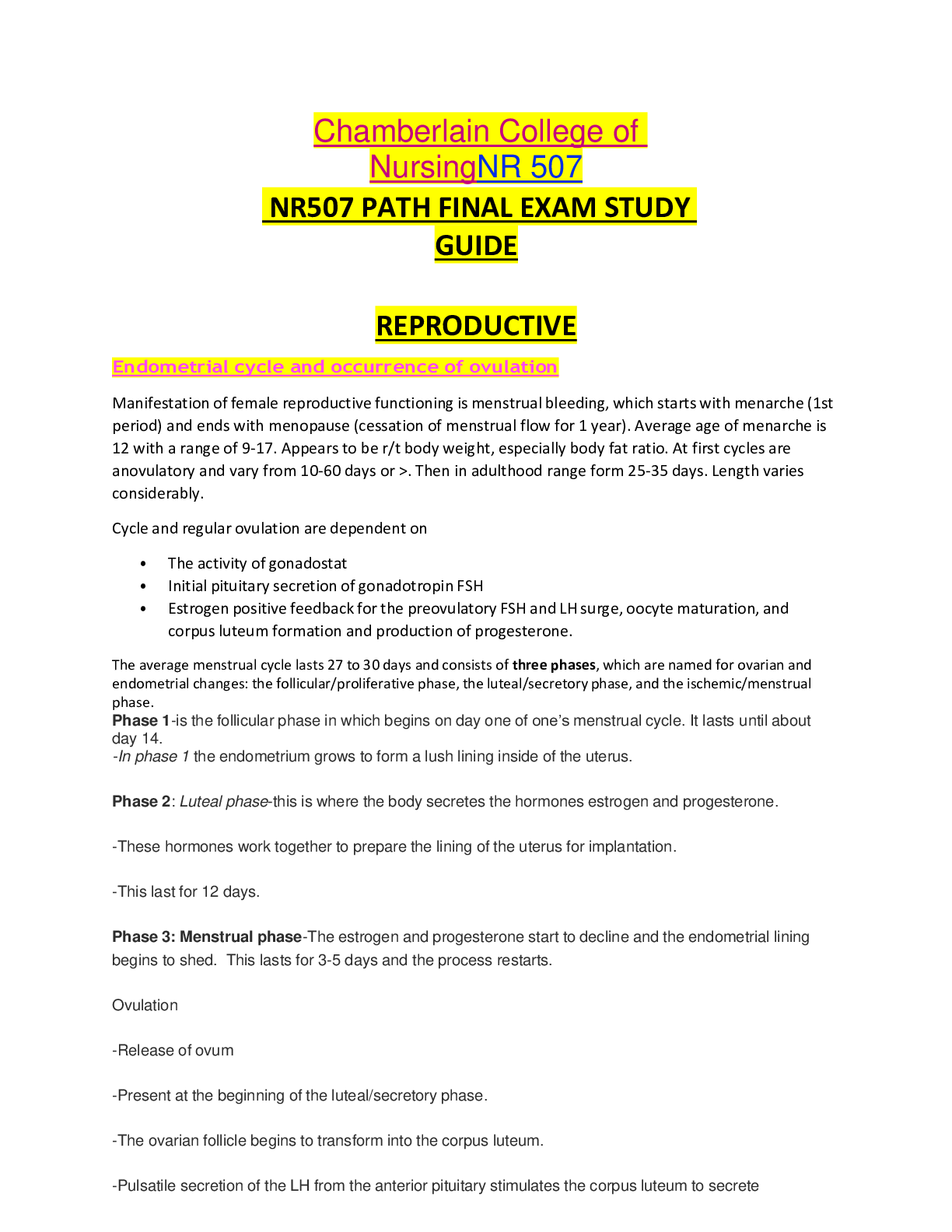*NURSING > STUDY GUIDE > RN Pharmacology for Nursing Review Module Edition 6.0 Sheryl Sommer, Janean Johnson, Karin Roberts, (All)
RN Pharmacology for Nursing Review Module Edition 6.0 Sheryl Sommer, Janean Johnson, Karin Roberts, Sharon R. Redding, Brenda Ball, Norma Jean Henry, Audrey Knippa, Peggy Leehy
Document Content and Description Below
coNtRibutoRs Sheryl Sommer, PhD, RN, CNE VP Nursing Education & Strategy Janean Johnson, MSN, RN Nursing Education Strategist Karin Roberts, PhD, MSN, RN, CNE Nursing Education Coordinator Shar... on R. Redding, EdD, RN, CNE Nursing Education Specialist and Content Project Coordinator Lois Churchill, MN, RN Nursing Education Specialist Brenda Ball, MEd, BSN, RN Nursing Education Specialist Norma Jean Henry, MSN/Ed, RN Nursing Education Specialist Audrey Knippa, MS, MPH, RN, CNE Nursing Education Coordinator Peggy Leehy, MSN, RN Nursing Education Specialist EditoRial aNd PublishiNg Derek Prater Spring Lenox Michelle Renner Mandy Tallmadge Kelly Von Lunen coNsultaNts Susan Adcock, RN, MS Nancy Menath Bailey, RN, BSN, MSN Julie S. Williard, RN, NP-C RN Pharmacology for Nursing Review Module Edition 6.0RN PhaRmacology foR NuRsiNg Review module editioN 6.0 ii RN PhaRmacology foR NuRsiNg intellectual Property Notice ATI Nursing is a division of Assessment Technologies Institute®, LLC Copyright © 2013 Assessment Technologies Institute, LLC. All rights reserved. The reproduction of this work in any electronic, mechanical or other means, now known or hereafter invented, is forbidden without the written permission of Assessment Technologies Institute, LLC. All of the content in this publication, including, for example, the cover, all of the page headers, images, illustrations, graphics, and text, are subject to trademark, service mark, trade dress, copyright, and/or other intellectual property rights or licenses held by Assessment Technologies Institute, LLC, one of its affiliates, or by third parties who have licensed their materials to Assessment Technologies Institute, LLC. important Notice to the Reader Assessment Technologies Institute, LLC, is the publisher of this publication. The content of this publication is for informational and educational purposes only and may be modified or updated by the publisher at any time. This publication is not providing medical advice and is not intended to be a substitute for professional medical advice, diagnosis, or treatment. The publisher has designed this publication to provide accurate information regarding the subject matter covered; however, the publisher is not responsible for errors, omissions, or for any outcomes related to the use of the contents of this book and makes no guarantee and assumes no responsibility or liability for the use of the products and procedures described or the correctness, sufficiency, or completeness of stated information, opinions, or recommendations. The publisher does not recommend or endorse any specific tests, providers, products, procedures, processes, opinions, or other information that may be mentioned in this publication. Treatments and side effects described in this book may not be applicable to all people; likewise, some people may require a dose or experience a side effect that is not described herein. Drugs and medical devices are discussed that may have limited availability controlled by the Food and Drug Administration (FDA) for use only in a research study or clinical trial. Research, clinical practice, and government regulations often change the accepted standard in this field. When consideration is being given to use of any drug in the clinical setting, the health care provider or reader is responsible for determining FDA status of the drug, reading the package insert, and reviewing prescribing information for the most up-to-date recommendations on dose, precautions, and contraindications and determining the appropriate usage for the product. Any references in this book to procedures to be employed when rendering emergency care to the sick and injured are provided solely as a general guide. Other or additional safety measures may be required under particular circumstances. This book is not intended as a statement of the standards of care required in any particular situation, because circumstances and a patient’s physical condition can vary widely from one emergency to another. Nor is it intended that this book shall in any way advise personnel concerning legal authority to perform the activities or procedures discussed. Such specific determination should be made only with the aid of legal counsel. Some images in this book feature models. These models do not necessarily endorse, represent, or participate in the activities represented in the images. THE PUBLISHER MAKES NO REPRESENTATIONS OR WARRANTIES OF ANY KIND, WHETHER EXPRESS OR IMPLIED, WITH RESPECT TO THE CONTENT HEREIN. THIS PUBLICATION IS PROVIDED AS-IS, AND THE PUBLISHER AND ITS AFFILIATES SHALL NOT BE LIABLE FOR ANY ACTUAL, INCIDENTAL, SPECIAL, CONSEQUENTIAL, PUNITIVE, OR EXEMPLARY DAMAGES RESULTING, IN WHOLE OR IN PART, FROM THE READER’S USE OF, OR RELIANCE UPON, SUCH CONTENT.RN PhaRmacology foR NuRsiNg Review module editioN 6.0 RN PhaRmacology foR NuRsiNg iii user’s guide Welcome to the Assessment Technologies Institute® RN Pharmacology Nursing Review Module Edition 6.0. The mission of ATI’s Content Mastery Series® review modules is to provide user-friendly compendiums of nursing knowledge that will: ● Help you locate important information quickly. ● Assist in your learning efforts. ● Provide exercises for applying your nursing knowledge. ● Facilitate your entry into the nursing profession as a newly licensed RN. organization This review module is organized into units covering pharmacological principles (Unit 1) and medications affecting the body systems and physiological processes (Units 2 to 12). Chapters within these units conform to one of two organizing principles for presenting the content: ● Nursing concepts ● Medications Nursing concepts chapters begin with an overview describing the central concept and its relevance to nursing. Subordinate themes are covered in outline form to demonstrate relationships and present the information in a clear, succinct manner. Medications chapters include an overview describing a disorder or group of disorders. Medications used to treat these disorders are grouped according to classification. A specific medication may be selected as a prototype or example of the characteristics of medications in this classification. These sections include information about how the medication works, its therapeutic uses, and routes of administration. Next, you will find information about how complications, contraindications, and medication and food interactions, as well as nursing interventions and client education to help prevent and/or manage these issues. Finally, the chapter includes information on nursing administration of the medication and evaluation of the medication’s effectiveness. application exercises Questions are provided at the end of each chapter so you can practice applying your knowledge. The Application Exercises include NCLEX-style questions, such as multiple-choice and multiple-select items, and questions that ask you to apply your knowledge in other formats, such as by using an ATI Active Learning Template. After the Application Exercises, an answer key is provided, along with rationales for the answers.RN PhaRmacology foR NuRsiNg Review module editioN 6.0 iv RN PhaRmacology foR NuRsiNg NcleX® connections To prepare for the NCLEX-RN, it is important for you to understand how the content in this review module is connected to the NCLEX-RN test plan. You can find information on the detailed test plan at the National Council of State Boards of Nursing’s Web site: https://www.ncsbn.org/. When reviewing content in this review module, regularly ask yourself, “How does this content fit into the test plan, and what types of questions related to this content should I expect?” To help you in this process, we’ve included NCLEX Connections at the beginning of each unit and with each question in the Application Exercises Answer Keys. The NCLEX Connections at the beginning of each unit will point out areas of the detailed test plan that relate to the content within that unit. The NCLEX Connections attached to the Application Exercises Answer Keys will demonstrate how each exercise fits within the detailed content outline. These NCLEX Connections will help you understand how the detailed content outline is organized, starting with major client needs categories and subcategories and followed by related content areas and tasks. The major client needs categories are: ● Safe and Effective Care Environment ◯ Management of Care ◯ Safety and Infection Control ● Health Promotion and Maintenance ● Psychosocial Integrity ● Physiological Integrity ◯ Basic Care and Comfort ◯ Pharmacological and Parenteral Therapies ◯ Reduction of Risk Potential ◯ Physiological Adaptation An NCLEX Connection might, for example, alert you that content within a unit is related to: ● Pharmacological and Parenteral Therapies ◯ Adverse Effects/Contraindications/Side Effects/Interactions ■ Identify a contraindication to the administration of a medication to the client. QseN competencies As you use the review modules, you will note the integration of the Quality and Safety Education for Nurses (QSEN) competencies throughout the chapters. These competencies are integral components of the curriculum of many nursing programs in the United States and prepare you to provide safe, high-quality care as a newly licensed RN. Icons appear to draw your attention to the six QSEN competencies: ● Safety: The minimization of risk factors that could cause injury or harm while promoting quality care and maintaining a secure environment for clients, self, and others. ● Patient-Centered Care: The provision of caring and compassionate, culturally sensitive care that addresses clients’ physiological, psychological, sociological, spiritual, and cultural needs, preferences, and values.RN PhaRmacology foR NuRsiNg Review module editioN 6.0 RN PhaRmacology foR NuRsiNg v ● Evidence-Based Practice: The use of current knowledge from research and other credible sources, on which to base clinical judgment and client care. ● Informatics: The use of information technology as a communication and information-gathering tool that supports clinical decision-making and scientifically based nursing practice. ● Quality Improvement: Care related and organizational processes that involve the development and implementation of a plan to improve health care services and better meet clients’ needs. ● Teamwork and Collaboration: The delivery of client care in partnership with multidisciplinary members of the health care team to achieve continuity of care and positive client outcomes. icons Icons are used throughout the review module to draw your attention to particular areas. Keep an eye out for these icons: This icon is used for NCLEX connections. This icon is used for content related to safety and is a QSEN competency. When you see this icon, take note of safety concerns or steps that nurses can take to ensure client safety and a safe environment. This icon is a QSEN competency that indicates the importance of a holistic approach to providing care. This icon, a QSEN competency, points out the integration of research into clinical practice. This icon is a QSEN competency and highlights the use of information technology to support nursing practice. This icon is used to focus on the QSEN competency of integrating planning processes to meet clients’ needs. This icon highlights the QSEN competency of care delivery using an interprofessional approach. This icon indicates that a media supplement, such as a graphic, animation, or video, is available. If you have an electronic copy of the review module, this icon will appear alongside clickable links to media supplements. If you have a hardcopy version of the review module, visit www.atitesting. com for details on how to access these features. feedback ATI welcomes feedback regarding this review module. Please provide comments to: [email protected] RN PhaRmacology foR NuRsiNg tablE of coNtENts UNit 1 Pharmacological Principles NclEX® coNNEctioNs ....................................................................................................................1 1 Pharmacokinetics and Routes of Administration............................................................2 2 Safe Medication Administration and Error Reduction..................................................14 3 Dosage Calculation........................................................................................................26 Solid Dosage ....................................................................................................................27 Liquid Dosage..................................................................................................................28 Injectable Dosage .............................................................................................................30 Dosages by Weight...........................................................................................................31 IV Flow Rates ..................................................................................................................34 4 Intravenous Therapy......................................................................................................47 5 Adverse Effects, Interactions, and Contraindications ...................................................57 6 Individual Considerations of Medication Administration............................................66 UNit 2 Medications Affecting the Nervous System NclEX® coNNEctioNs ..................................................................................................................72 7 Anxiety Disorders ..........................................................................................................73 Sedative Hypnotic Anxiolytic – Benzodiazepine .................................................................73 Atypical Anxiolytic/Nonbarbiturate Anxiolytic ..................................................................75 Selective Serotonin Reuptake Inhibitors (SSRI Antidepressants)...........................................76 8 Depressive Disorders......................................................................................................84 Selective Serotonin Reuptake Inhibitors (SSRIs)...................................................................84 Atypical Antidepressants ..................................................................................................87 Other Atypical Antidepressants.........................................................................................88 Tricyclic Antidepressants (TCAs).......................................................................................88 Monoamine Oxidase Inhibitors (MAOIs) ...........................................................................91 9 Bipolar Disorders............................................................................................................98 Mood Stabilizer ...............................................................................................................98 Mood-Stabilizing Antiepileptic Drugs (AEDs) ..................................................................101table of coNteNts RN PhaRmacology foR NuRsiNg vii 10 Psychotic Disorders......................................................................................................109 Antipsychotics – First-Generation (Conventional)............................................................110 Antipsychotics – Second-Generation (Atypical) ................................................................113 11 Medications for Children and Adolescents with Mental Health Issues......................123 CNS Stimulants .............................................................................................................123 Norepinephrine Selective Reuptake Inhibitor ....................................................................125 Tricyclic Antidepressants (TCAs).....................................................................................127 Alpha2-Adrenergic Agonists ............................................................................................129 Antipsychotics – Atypical ..............................................................................................131 12 Substance Use Disorders ..............................................................................................137 Medications to Support Withdrawal/Abstinence from Alcohol..........................................137 Medications to Support Withdrawal/Abstinence from Opioids..........................................140 Medications to Support Withdrawal/Abstinence from Nicotine.........................................141 13 Chronic Neurologic Disorders.....................................................................................148 Cholinesterase Inhibitors................................................................................................148 Anti-Parkinson’s Medications .........................................................................................151 Antiepileptics (AEDs) .....................................................................................................156 14 Eye and Ear Disorders ..................................................................................................169 Beta Adrenergic Blockers.................................................................................................170 Alpha2-Adrenergic Agonists ............................................................................................172 Prostaglandin Analogs....................................................................................................173 Osmotic Agents..............................................................................................................174 Carbonic Anhydrase Inhibitor (Systemic) .......................................................................174 Antimicrobials ...............................................................................................................176 Fluoroquinolone Antibiotic Plus Steroid Medication.........................................................177 15 Miscellaneous Central Nervous System Medications..................................................184 Neuromuscular Blocking Agents......................................................................................184 Muscle Relaxants and Antispasmodics............................................................................187 Muscarinic Agonists .......................................................................................................189 Muscarinic Antagonists ..................................................................................................190table of coNteNts viii RN PhaRmacology foR NuRsiNg 16 Sedative-Hypnotics ......................................................................................................196 Benzodiazepines.............................................................................................................196 Nonbenzodiazepines.......................................................................................................199 Melatonin Agonist..........................................................................................................200 Intravenous Anesthetics..................................................................................................201 UNit 3 Medications Affecting the Respiratory System NclEX® coNNEctioNs ................................................................................................................208 17 Airflow Disorders .........................................................................................................209 Beta 2-Adrenergic Agonists...............................................................................................209 Methylxanthines ............................................................................................................211 Inhaled Anticholinergics.................................................................................................213 Glucocorticoids ..............................................................................................................214 Leukotriene Modifiers .....................................................................................................217 18 Upper Respiratory Disorders........................................................................................222 Antitussives – Opioids ....................................................................................................222 Antitussives – Nonopioids...............................................................................................223 Expectorants ..................................................................................................................224 Mucolytics .....................................................................................................................225 Decongestants................................................................................................................226 Antihistamines ..............................................................................................................228 Nasal Glucocorticoids.....................................................................................................230 UNit 4 Medications Affecting the Cardiovascular System NclEX® coNNEctioNs ................................................................................................................235 19 Medications Affecting Urinary Output .......................................................................236 High-Ceiling Loop Diuretics............................................................................................236 Thiazide Diuretics..........................................................................................................239 Potassium-Sparing Diuretics ...........................................................................................241 Osmotic Diuretics...........................................................................................................243table of coNteNts RN PhaRmacology foR NuRsiNg ix 20 Medications Affecting Blood Pressure .........................................................................249 Angiotensin-Converting Enzyme (ACE) Inhibitors ...........................................................249 Angiotensin II Receptor Blockers (ARBs) ..........................................................................252 Aldosterone Antagonists .................................................................................................253 Direct Renin Inhibitors ...................................................................................................254 Calcium Channel Blockers..............................................................................................255 Alpha Adrenergic Blockers (Sympatholytics) ....................................................................259 Centrally Acting Alpha2 Agonists....................................................................................260 Beta Adrenergic Blockers (Sympatholytics).......................................................................262 Medications for Hypertensive Crisis ................................................................................265 21 Cardiac Glycosides and Heart Failure..........................................................................272 Cardiac Glycosides.........................................................................................................272 Adrenergic Agonists........................................................................................................275 22 Angina..........................................................................................................................284 Organic Nitrates.............................................................................................................284 Antianginal Agent..........................................................................................................288 23 Medications Affecting Cardiac Rhythm ......................................................................294 Antidysrhythmic Medications .........................................................................................295 24 Antilipemic Agents ......................................................................................................308 HMG CoA Reductase Inhibitors (Statins) ........................................................................308 Cholesterol Absorption Inhibitor .....................................................................................310 Bile-Acid Sequestrants ....................................................................................................312 Other Medications: Nicotinic Acid, Niacin (Niacor, Niaspan)...........................................313 Fibrates .........................................................................................................................314table of coNteNts x RN PhaRmacology foR NuRsiNg UNit 5 Medications Affecting the Hematologic System NclEX® coNNEctioNs ................................................................................................................320 25 Medications Affecting Coagulation.............................................................................321 Anticoagulants – Parenteral............................................................................................321 Anticoagulant – Oral......................................................................................................325 Direct Thrombin Inhibitors.............................................................................................327 Direct Inhibitor of Factor Xa ..........................................................................................329 Antiplatelets ..................................................................................................................330 Thrombolytic Medications ..............................................................................................334 26 Growth Factors ............................................................................................................341 Erythropoietic Growth Factors.........................................................................................341 Leukopoietic Growth Factors...........................................................................................343 Granulocyte Macrophage Colony Stimulating Factor........................................................344 Thrombopoietic Growth Factors......................................................................................345 27 Blood and Blood Products ...........................................................................................351 UNit 6 Medications Affecting the Gastrointestinal System and Nutrition NclEX® coNNEctioNs ................................................................................................................360 28 Peptic Ulcer Disease .....................................................................................................361 Antibiotics .....................................................................................................................361 Histamine 2-Receptor Antagonists ....................................................................................362 Proton Pump Inhibitor....................................................................................................363 Mucosal Protectant.........................................................................................................365 Antacids ........................................................................................................................366 Prostaglandin E Analog..................................................................................................368table of coNteNts RN PhaRmacology foR NuRsiNg xi 29 Gastrointestinal Disorders ...........................................................................................373 Antiemetics....................................................................................................................373 Laxatives .......................................................................................................................377 Antidiarrheals................................................................................................................379 Prokinetic Agents............................................................................................................380 Medications for Irritable Bowel Syndrome with Diarrhea (IBS-D) .....................................382 Medications for Irritable Bowel Syndrome with Constipation (IBS-C) ...............................383 5-Aminosalicylates.........................................................................................................384 Probiotics – Dietary Supplements ....................................................................................385 30 Vitamins, Minerals, and Supplements.........................................................................390 Iron Preparations............................................................................................................390 Vitamin B 12 – Cyanocobalamin ......................................................................................393 Folic Acid.......................................................................................................................395 Potassium Supplements ..................................................................................................396 Magnesium Sulfate.........................................................................................................397 Herbal Supplements........................................................................................................399 UNit 7 Medications Affecting the Reproductive System NclEX® coNNEctioNs ................................................................................................................409 31 Medications Affecting the Reproductive Tract ............................................................410 Estrogens .......................................................................................................................410 Progesterones..................................................................................................................412 Hormonal Contraceptives ...............................................................................................414 Androgens......................................................................................................................416 5-Alpha Reductase Inhibitors..........................................................................................418 Alpha1-Adrenergic Antagonists .......................................................................................419 Phosphodiesterase Type 5 (PDE5) Inhibitors....................................................................421 32 Medications Affecting Labor and Delivery..................................................................426 Uterine Stimulants-Oxytocics..........................................................................................426 Tocolytic Medications.....................................................................................................428 Opioid Analgesics...........................................................................................................430table of coNteNts xii RN PhaRmacology foR NuRsiNg UNit 8 Medications for Joint and Bone Conditions NclEX® coNNEctioNs ................................................................................................................436 33 Rheumatoid Arthritis...................................................................................................437 Disease-Modifying Antirheumatic Drugs (DMARDs) .......................................................437 34 Bone Disorders.............................................................................................................448 Calcium Supplements.....................................................................................................448 Selective Estrogen Receptor Modulator (Agonist/Antagonist).............................................450 Bisphosphonates ............................................................................................................451 Calcitonin......................................................................................................................453 UNit 9 Medications for Pain and Inflammation NclEX® coNNEctioNs ................................................................................................................459 35 Nonopioid Analgesics..................................................................................................460 Nonsteroidal Anti-Inflammatory Drugs...........................................................................460 Acetaminophen..............................................................................................................463 36 Opioid Agonists and Antagonists................................................................................470 Opioid Agonists..............................................................................................................470 Agonist-Antagonist Opioids............................................................................................474 Opioid Antagonists.........................................................................................................476 37 Adjuvant Medications for Pain....................................................................................483 38 Miscellaneous Pain Medications..................................................................................493 Antigout Medication.......................................................................................................493 Migraine Medications.....................................................................................................496 Local Anesthetics ...........................................................................................................500 UNit 10 Medications Affecting the Endocrine System NclEX® coNNEctioNs ................................................................................................................508 39 Diabetes Mellitus .........................................................................................................509 Insulin...........................................................................................................................509 Oral Antidiabetics..........................................................................................................512 Amylin Mimetics ...........................................................................................................516 Incretin Mimetics ..........................................................................................................517 Hyperglycemic Agent .....................................................................................................518table of coNteNts RN PhaRmacology foR NuRsiNg xiii 40 Endocrine Disorders.....................................................................................................524 Thyroid Hormone...........................................................................................................524 Antithyroid Medications.................................................................................................526 Anterior Pituitary Hormones/Growth Hormones ..............................................................530 Antidiuretic Hormone (ADH)..........................................................................................532 Adrenal Hormone Replacement.......................................................................................533 UNit 11 Medications Affecting the Immune System NclEX® coNNEctioNs ................................................................................................................540 41 Immunizations.............................................................................................................541 Vaccinations ..................................................................................................................541 42 Chemotherapy Agents.................................................................................................551 Cytotoxic Chemotherapy Agents .....................................................................................551 Antimetabolites..............................................................................................................552 Antitumor Antibiotics ....................................................................................................555 Antimitotics...................................................................................................................558 Alkylating Agents...........................................................................................................560 Topoisomerase Inhibitors................................................................................................562 Other Antineoplastic Agents ...........................................................................................564 Noncytotoxic Chemotherapy Agents................................................................................566 Hormonal Agents – Prostate Cancer Medications.............................................................567 Hormonal Agents – Breast Cancer Medications ...............................................................569 Biologic Response Modifiers ............................................................................................571 Targeted Antineoplastic Medications...............................................................................573 UNit 12 Medications for Infection NclEX® coNNEctioNs ................................................................................................................582 43 Principles of Antimicrobial Therapy ...........................................................................583 44 Antibiotics Affecting the Bacterial Cell Wall...............................................................592 Penicillins......................................................................................................................592 Cephalosporins ..............................................................................................................594 Carbapenems.................................................................................................................595 Other Inhibitors .............................................................................................................596table of coNteNts xiv RN PhaRmacology foR NuRsiNg 45 Antibiotics Affecting Protein Synthesis.......................................................................603 Tetracyclines ..................................................................................................................603 Macrolides .....................................................................................................................605 Aminoglycosides.............................................................................................................607 46 Urinary Tract Infections...............................................................................................614 Sulfonamides and Trimethoprim ....................................................................................614 Urinary Tract Antiseptics................................................................................................616 Fluoroquinolones............................................................................................................618 Urinary Tract Analgesic..................................................................................................620 47 Mycobacterial, Fungal, and Parasitic Infections..........................................................625 Antimycobacterial (Antituberculosis) ..............................................................................625 Antiprotozoals ...............................................................................................................628 Antifungals....................................................................................................................629 48 Viral Infections, HIV, and AIDS ...................................................................................637 Antivirals.......................................................................................................................637 Antiretrovirals – Fusion/Entry Inhibitors .........................................................................640 Antiretrovirals – CCR5 Antagonists ................................................................................641 Antiretrovirals – NRTIs...................................................................................................642 Antiretrovirals – NNRTIs ................................................................................................643 Antiretrovirals – Protease Inhibitors ...............................................................................645 Antiretrovirals – Integrase Inhibitors (INSTIs) .................................................................646 References...............................................................................................................................653 APPENdix Active Learning Templates Basic Concept...................................................................................................................... A1 Diagnostic Procedure .......................................................................................................... A2 System Disorder .................................................................................................................. A3 Growth and Development.................................................................................................. A4 Medication .......................................................................................................................... A5 Nursing Skill........................................................................................................................ A6 Therapeutic Procedure ........................................................................................................ A7RN PhaRmacology foR NuRsiNg 1 NCLEX® CONNECTIONS unit 1 UNit 1 Pharmacological Principles chaPtERs › Pharmacokinetics and Routes of Administration › Safe Medication Administration and Error Reduction › Dosage Calculation › Intravenous Therapy › Adverse Effects, Interactions, and Contraindications › Individual Considerations of Medication Administration NCLEx® CoNNECtioNs When reviewing the chapters in this unit, keep in mind the relevant sections of the NCLEX® outline, in particular: client Needs: safety and infection control client Needs: Pharmacological and Parenteral therapies › Relevant topics/tasks include: » Error Prevention › Assess for client allergies/sensitivities and intervene as needed. › Verify appropriateness and/or accuracy of a treatment order. » Reporting of Incident/Event/Irregular Occurrence/Variance › Identify need/situation where reporting of incident/event/irregular occurrence/variance is appropriate. › Acknowledge and document practice error. › Relevant topics/tasks include: » Adverse Effects/Contraindications/Side Effects/ Interactions › Identify a contraindication to the administration of a medication to the client. » Dosage Calculation › Perform calculations needed for medication administration. » Medication Administration › Prepare and administer medications, using the rights of medication administration. › Review pertinent client data prior to medication administration.2 RN PhaRmacology foR NuRsiNg chapter 1 UNit 1 PhaRmacological PRiNciPlEs ChAPtER 1 Pharmacokinetics and Routes of administration overview ● Pharmacokinetics refers to how medications travel through the body. Medications undergo a variety of biochemical processes that result in absorption, distribution, metabolism, and excretion. Phases of Pharmacokinetics ● Absorption is the transmission of medications from the location of administration (gastrointestinal [GI] tract, muscle, skin, or subcutaneous tissue) to the bloodstream. The most common routes of administration are enteral (through the GI tract) and parenteral (by injection). Each of these routes will have a unique pattern of absorption. ◯ The rate of medication absorption determines how soon the medication will take effect. ◯ The amount of medication absorbed determines its intensity. ◯ The route of administration affects the rate and amount of absorption. [Show More]
Last updated: 1 year ago
Preview 1 out of 677 pages
Instant download
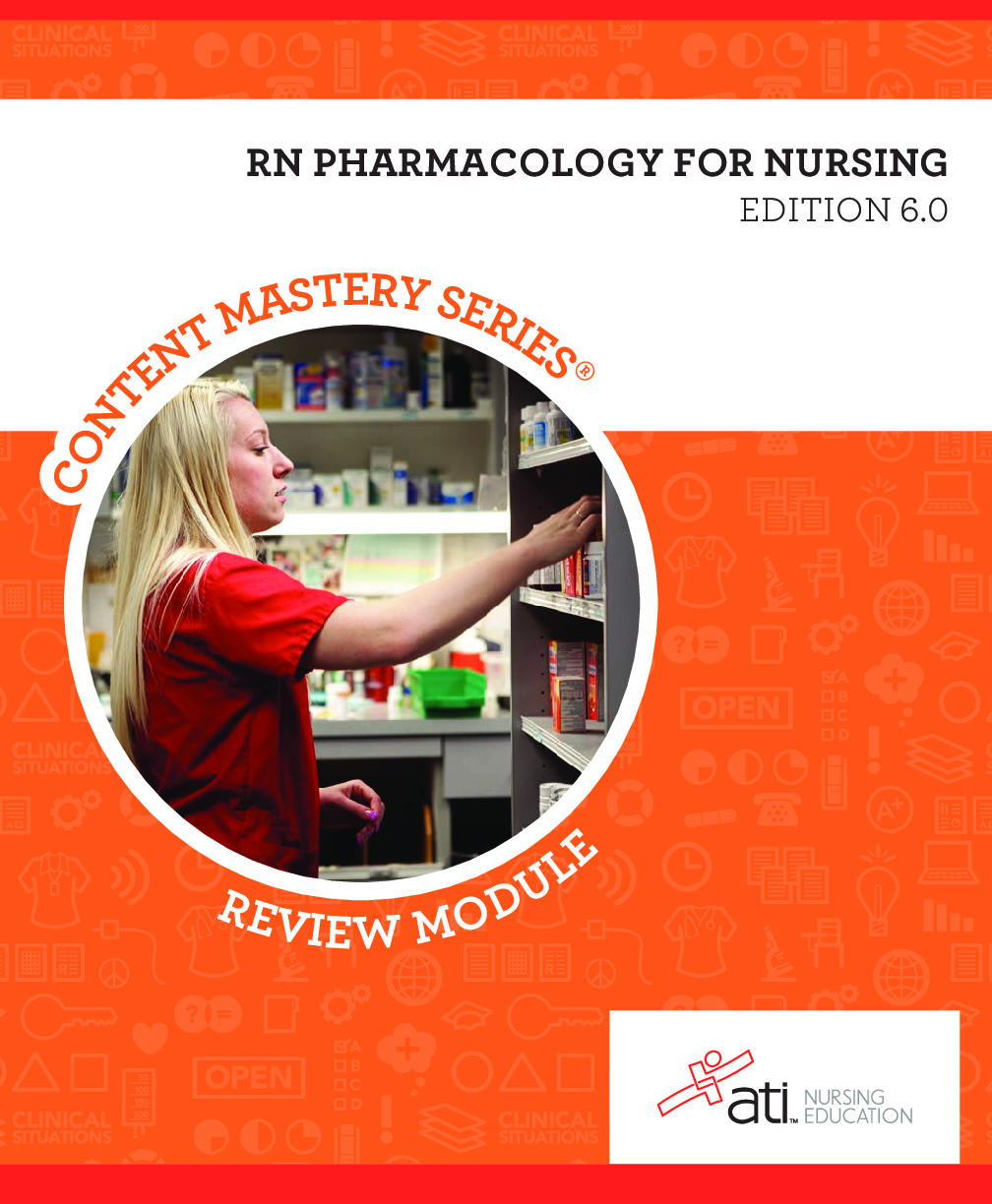
Buy this document to get the full access instantly
Instant Download Access after purchase
Add to cartInstant download
Reviews( 0 )
Document information
Connected school, study & course
About the document
Uploaded On
Jun 03, 2021
Number of pages
677
Written in
Additional information
This document has been written for:
Uploaded
Jun 03, 2021
Downloads
0
Views
25


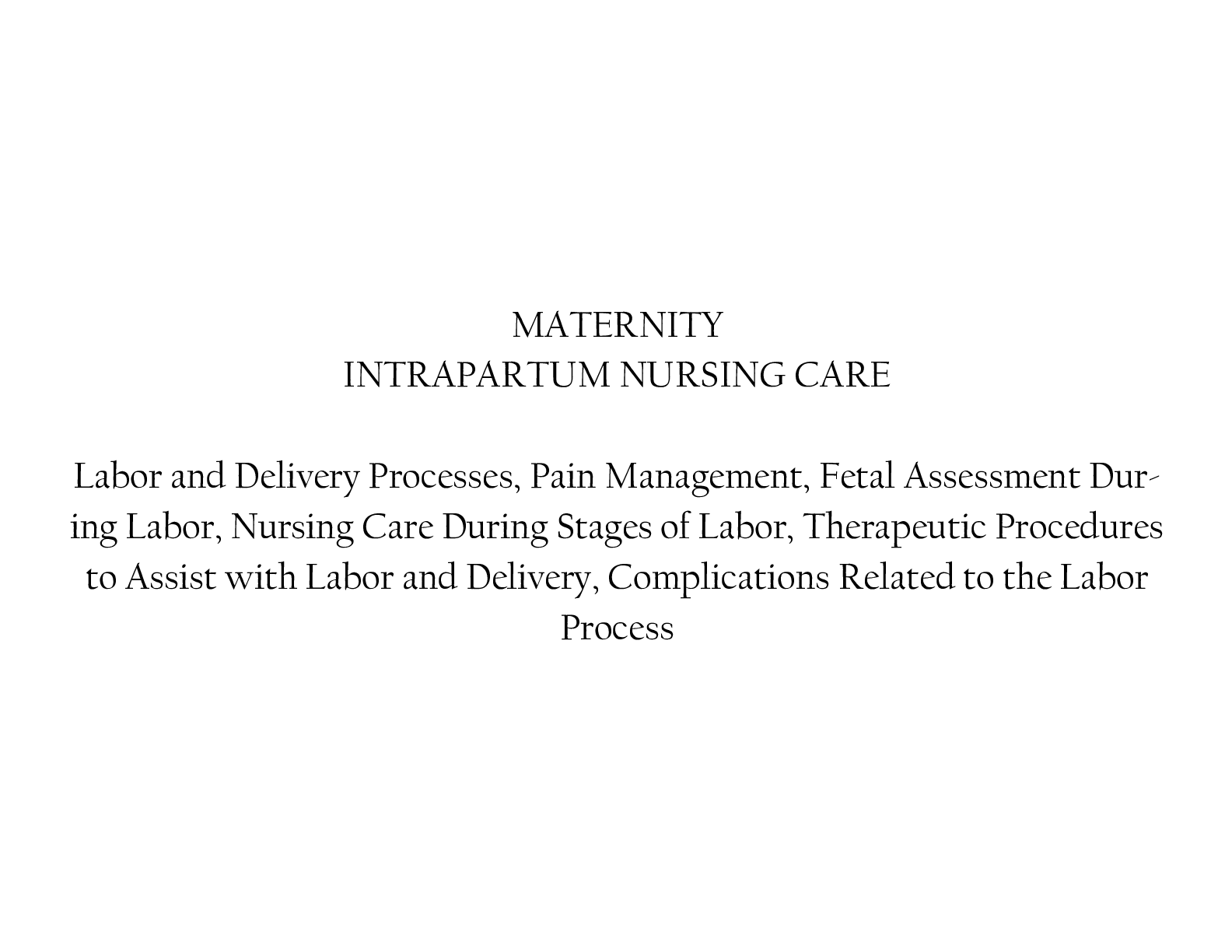
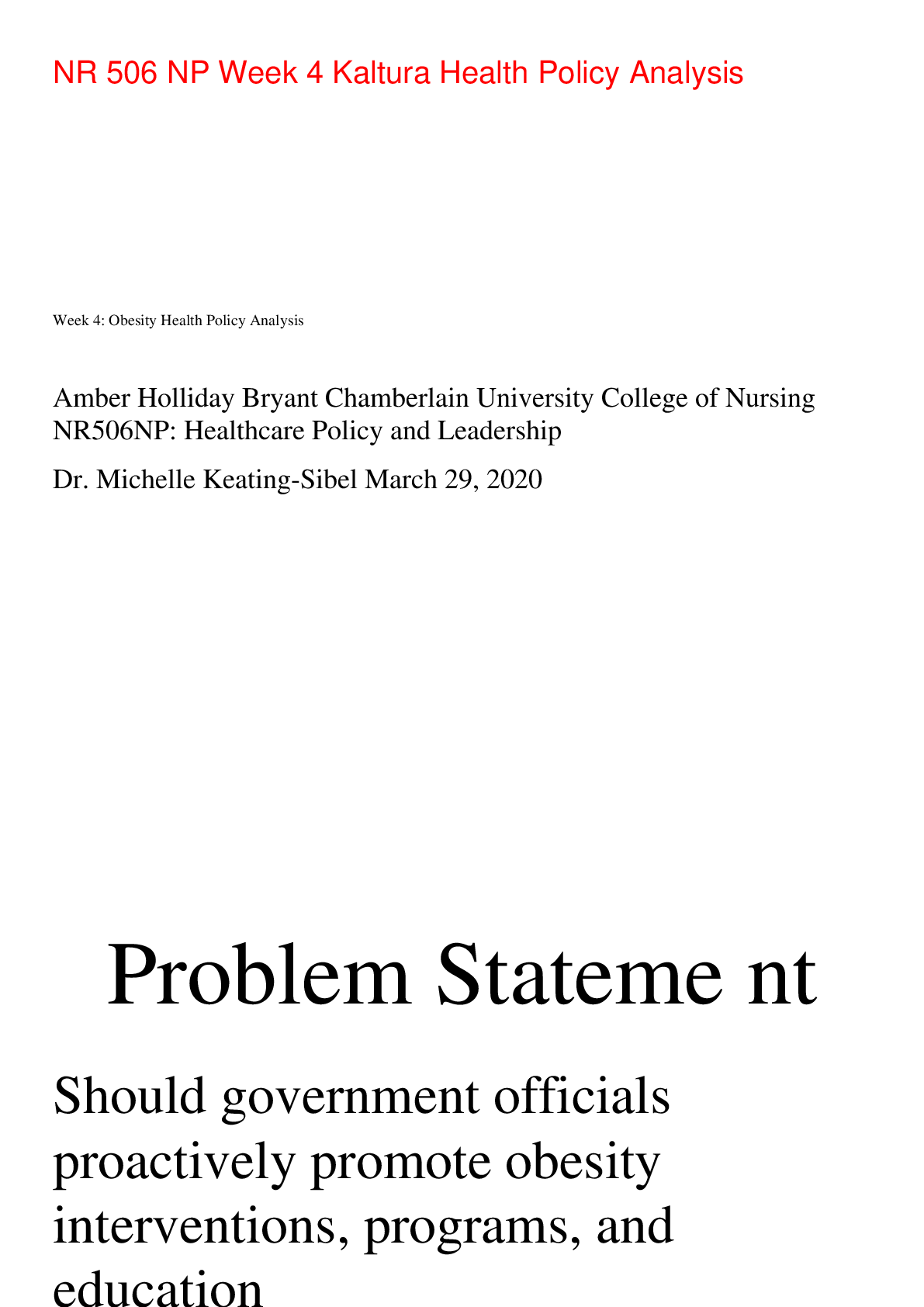
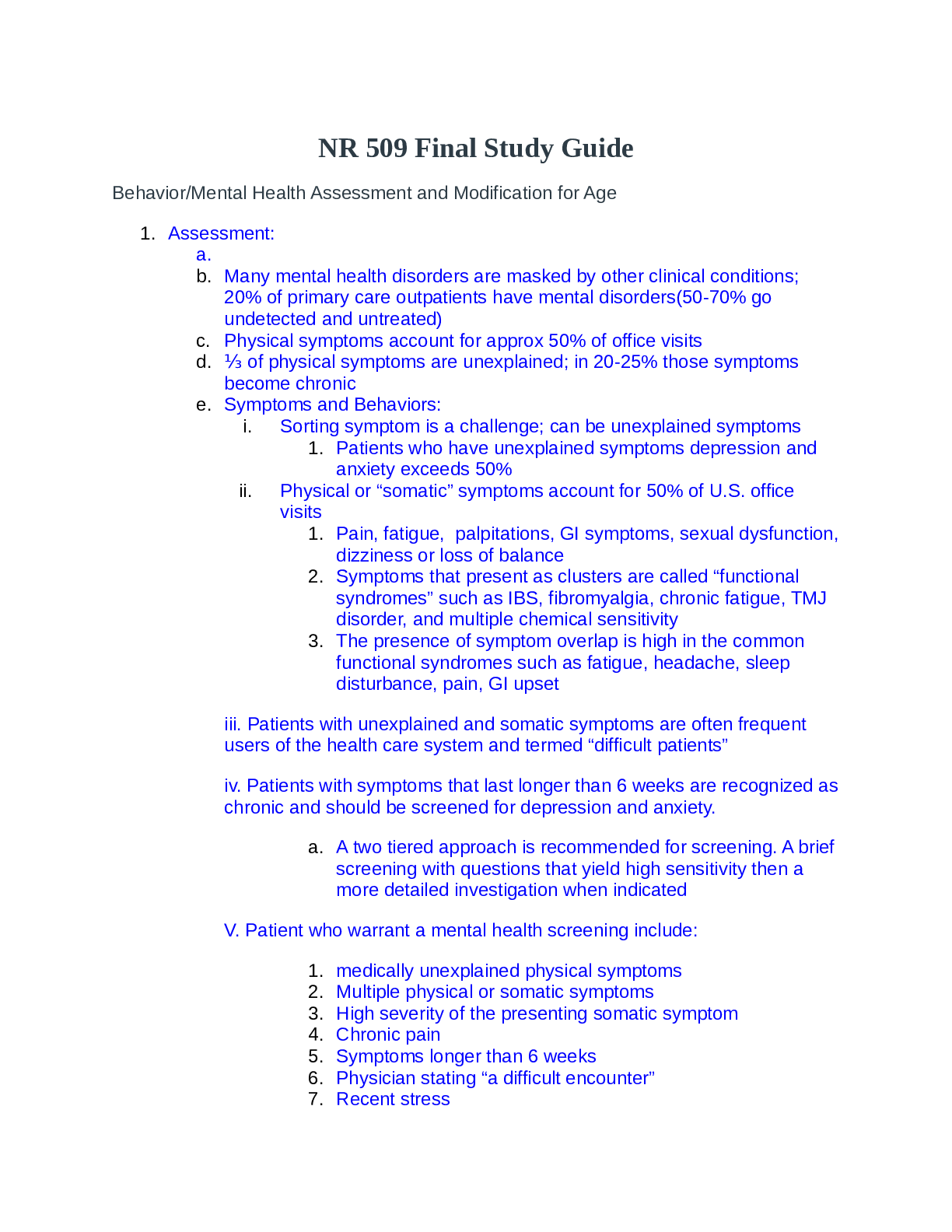
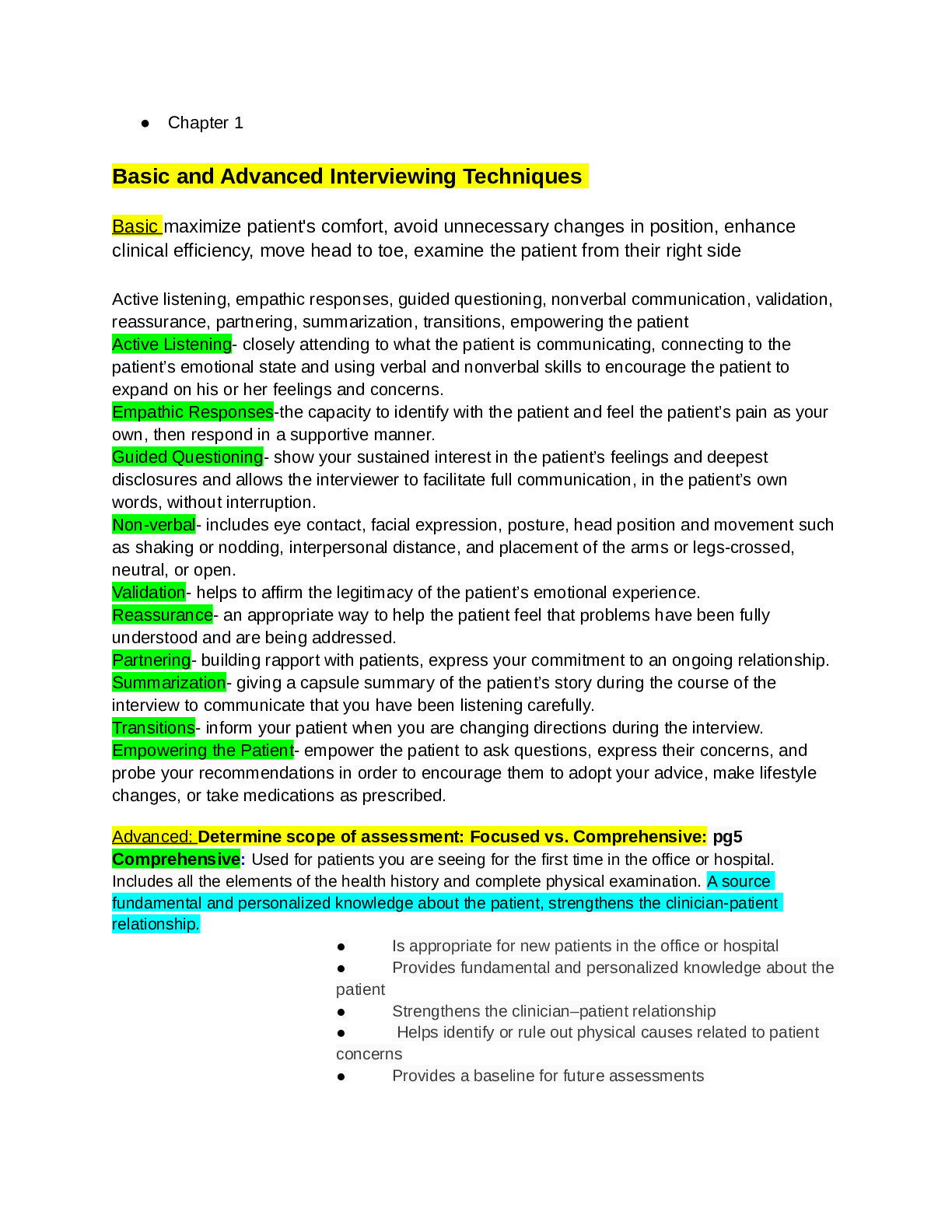
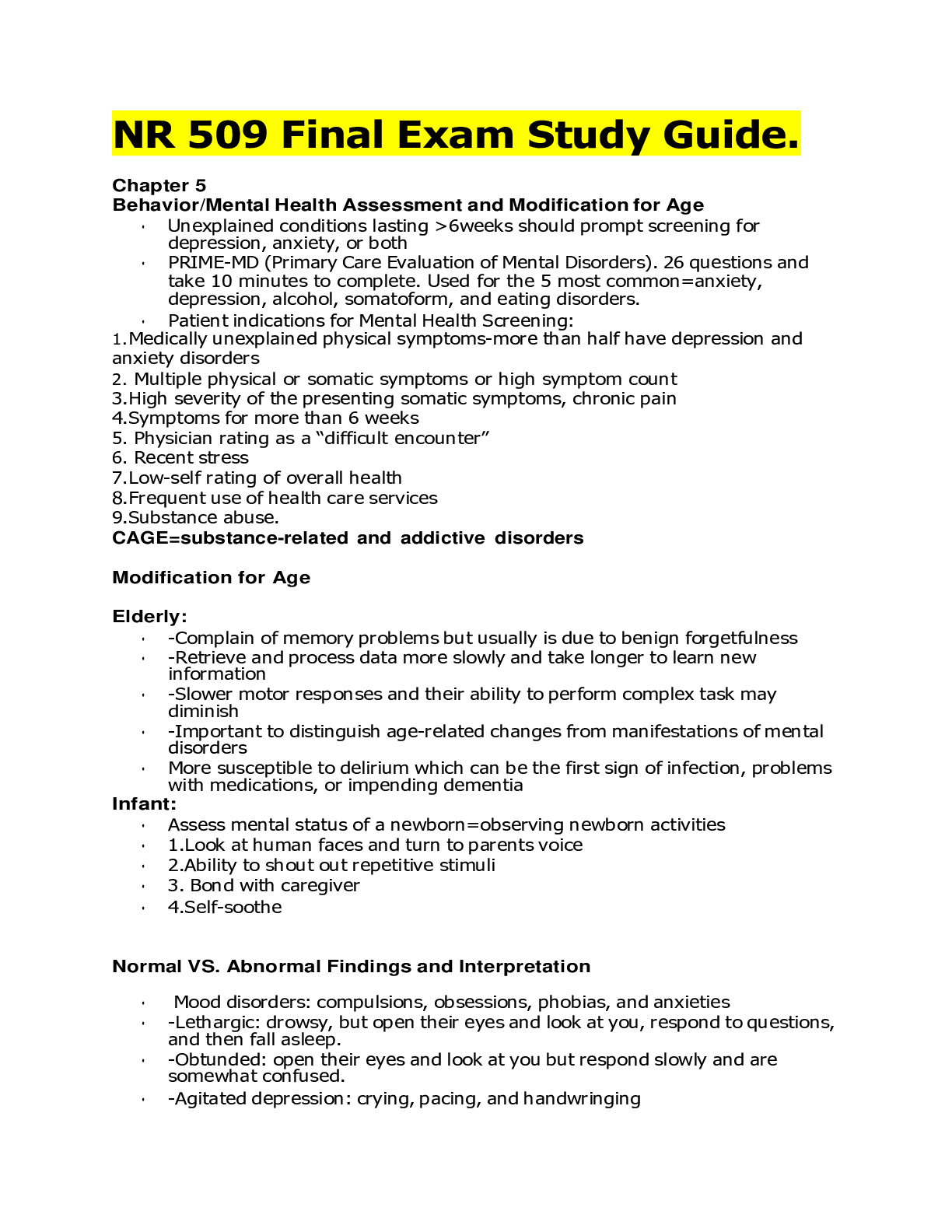
.png)




